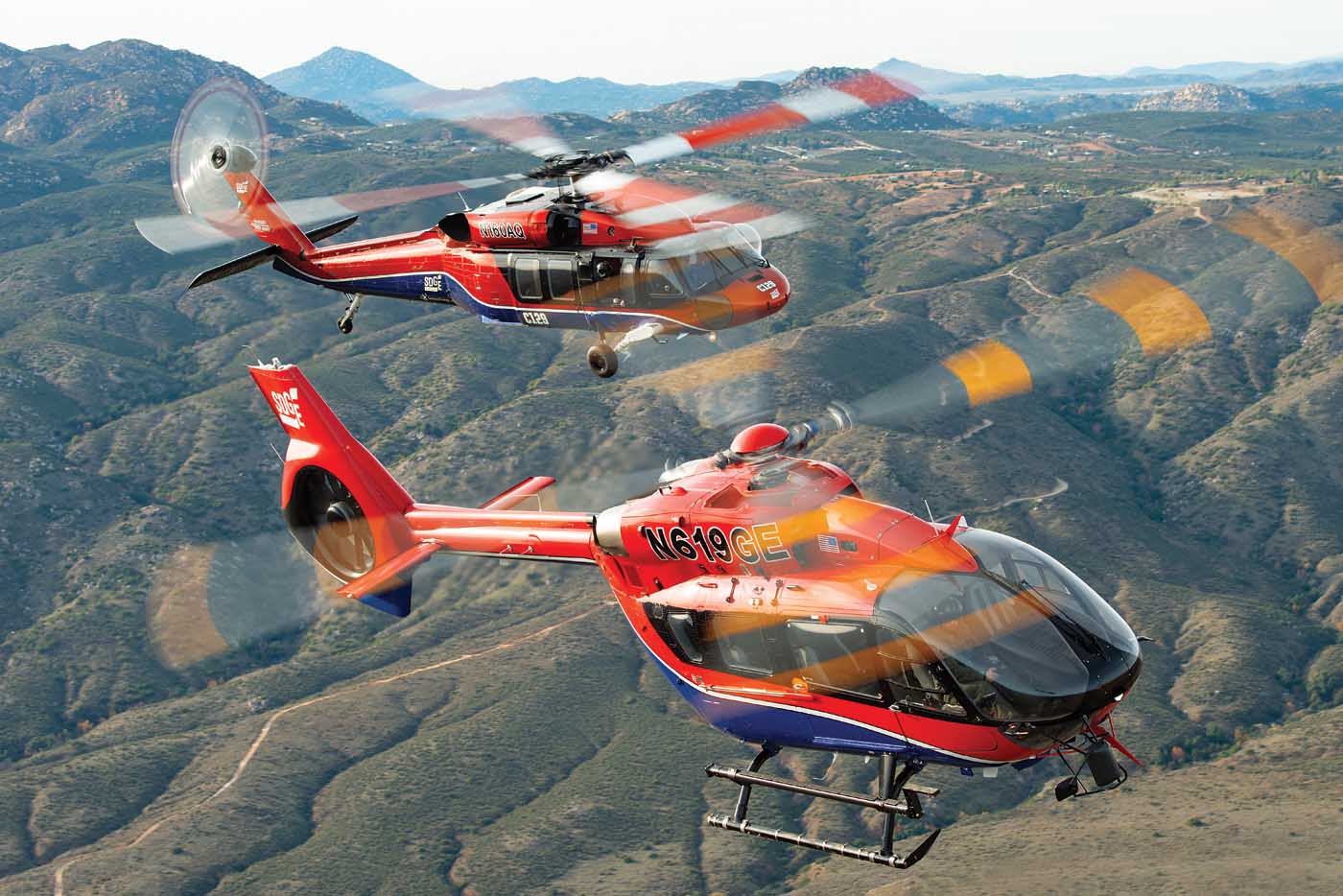Not many utility providers have a fleet of aircraft on year-round contract — let alone a fleet that includes two Type I (heavy lift) aircraft. But in terms of its aviation capability, San Diego Gas & Electric (SDG&E) has history of being far from ordinary. Its 117-mile (190-kilometer) Sunrise Powerlink (SRPL) high voltage powerline, created between December 2010 and June 2012, was the result of one of the largest helicopter construction projects ever undertaken, requiring over 30,000 flight hours of work. While that project was notably unique, SDG&E has maintained an impressive rotary-wing capability over the years to allow it to construct and maintain its lines, and provide its region with a powerful firefighting capability. Today, its fleet includes an Erickson S-64 Aircrane, a Sikorsky UH-60 Black Hawk, and an Airbus H145.

As the electric and natural gas utility provider servicing San Diego County and portions of neighboring Orange County, SDG&E has an estimated 3.6 million customers across an area of over 4,100 square miles (10,620 square kilometers). Extending east from densely populated coastal and interior valley communities, its service area spans rural foothills and mountains before descending into the expansive Colorado/Sonoran Desert.
The nearly $2 billion SRPL was an ambitious and highly controversial project to construct a transmission line to bring much-needed renewable energy to meet the needs of the growing San Diego region. The line originates from a substation in the Imperial County desert, and runs west across mountains and foothills, terminating at a substation in Metro San Diego.
The rugged terrain and harsh environment along the construction route wasn’t necessarily the steepest hurdle for SDG&E. Stiff, inflexible conditions were imposed by the California Public Utilities Commission (CPUC) and other regulatory agencies to mitigate the line’s impact on the environment, wildlife, local communities and sacred Indian lands. To help address these concerns, SDG&E used a large fleet of contracted helicopters — on any given day, 30 or more (mostly light single-engine aircraft) worked from a number of remote fly-yards along the construction route. There, pilots received the latest regulatory information and daily mission assignments; work crew and biologist shuttles, equipment movement and external load operations.

SDG&E closely monitored flight activity using TracPlus, an aircraft satellite tracking service. With flight safety of paramount importance, the company also wanted to ensure compliance with the many restrictions established for the small, constricted flight corridors.
Four Erickson S-64 Aircranes worked on the project, primarily moving and placing the heavy steel-lattice tower sections. SDG&E had purchased one of these (an S-64F) specifically to work on the program. Dubbed “Sun Bird,” the Aircrane was managed by SDG&E with operation, maintenance and support contracted to Erickson.
When work finished on SRPL, SDG&E released all but a handful of air assets and Sun Bird was eventually sold back to Erickson.

In California and all throughout the western states, wildfires have always been a clear and present danger. In 2003 and again in 2007, San Diego County experienced two horrific fires that underscored the potential of wind driven wildfires. The two firestorms charred over 500,000 acres, destroyed more than 3,400 homes and took the lives of 17 people.
At the time, the county’s aerial firefighting resources were seasonal and often sparse. The state fire agency (at the time, the California Department of Forestry) positioned a number of contract firefighting aircraft locally, but they were typically not assigned year-round, and would sometimes need to respond to calls outside the county. SDG&E was the first entity, public or private, to provide a Type 1 helicopter as a dedicated county firefighting asset.
In 2009, SDG&E partnered with the County of San Diego on an exclusive-use contract with Erickson for fire suppression throughout the county. The contract provided an Aircrane during the four-month peak of fire season, and was the first time the county had ever had a Type 1 helicopter as a dedicated firefighting asset.

Sun Bird was made available as a firefighting asset on a year-round basis during its tenure in the SDG&E fleet, but when it returned to Erickson following completion of SRPL, SDG&E restored the annual four-month contract.
A Twin Requirement
Prior to Sun Bird and the fire contracts, SDG&E had long utilized local operators as a source for light and medium single-engine helicopters for call-when-needed (CWN) missions, powerline patrol, and light construction projects. However, shortly after SRPL was completed, an accident involving a CWN machine on an inspection flight would be the catalyst for change.
The utility provider opted to bring all flight operations under an “in-house” control authority, creating an Aviation Services department. It then began the process of selecting the aircraft it needed to fly the day-to-day work of powerline inspections and light construction support.

“We identified a need for twin-engine helicopters, mostly for our patrolling,” said Jesse Thrush, SDG&E aviation advisor. “Eventually we wanted to get into human external cargo, rescue hoist operations and other missions, and we made the decision at the company level that we weren’t going to do that with a single-engine helicopter. We started evaluating aircraft in the twin-engine market, something that would give us [category A] performance at our highest elevations and hottest temperatures.”
After a thorough evaluation process, the Airbus H145 was found to be the best match for the company’s existing needs, as well as providing for mission growth in the future. The aircraft was delivered in the spring of 2018, becoming the first H145 in the U.S. utility service sector and one of only a few working in the sector worldwide. While the aircraft is owned by SDG&E, HeliStream, Inc. (based in Costa Mesa, California) is contracted for operation, maintenance and support.
“From the company’s perspective, safety was the over-riding consideration,” Thrush said. “We wanted to feel completely comfortable flying in any conditions at any time. [The H145] is a tool that will greatly enhance our safety and efficiency with every job that we do. And since its delivery almost two years ago, it has been operating flawlessly.”
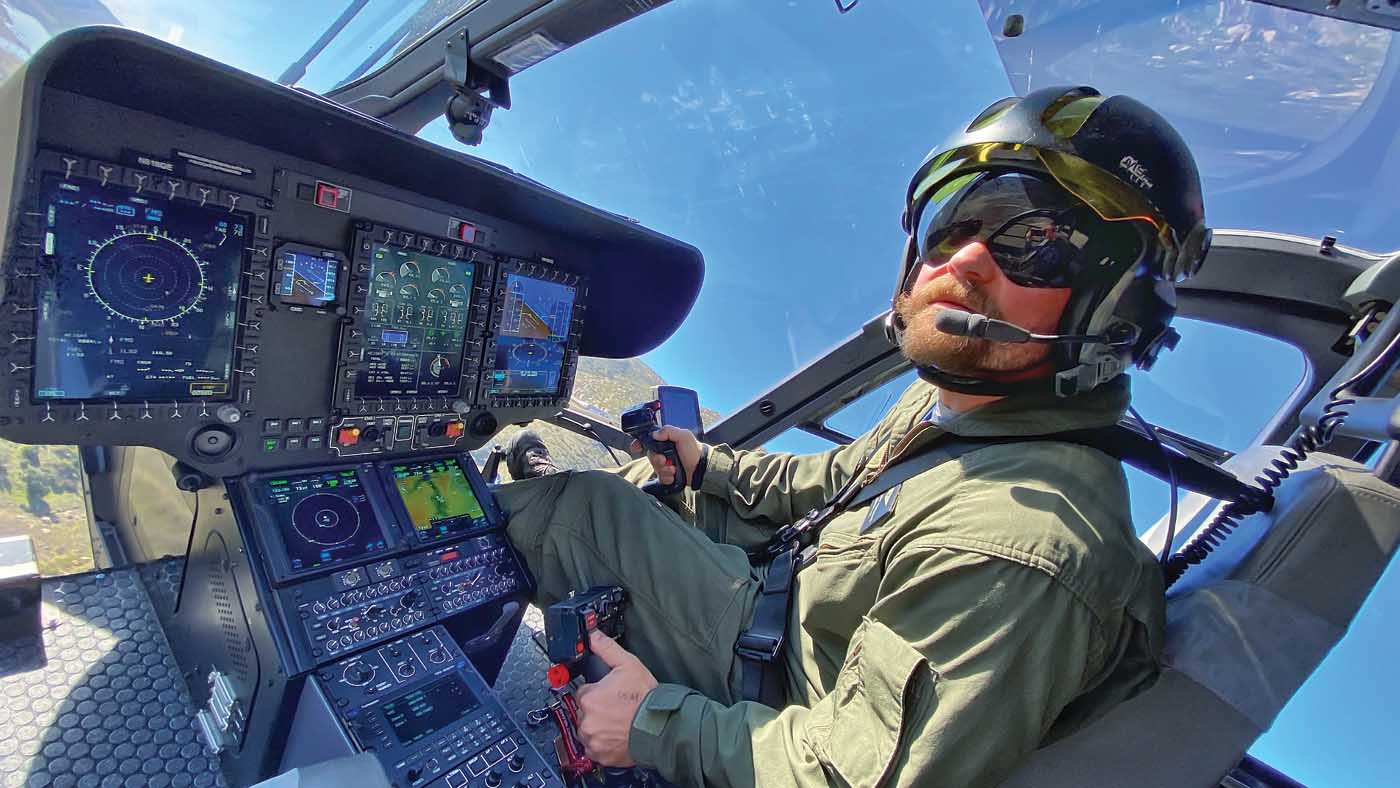
The H145 is equipped with a FLIR Systems Corona 350 II, a multi-sensor gimbal developed specifically for airborne survey and inspection of electric utility infrastructure. It’s capable of high-resolution color video, infrared and ultraviolet imaging, as well as still photography. Its technology can also be used by fire and emergency management officials for mapping fire lines, assessing rate of spread and identifying heat sources.
Mesh-network downlink technology from Silvus Technologies enables the H145 to transmit real-time imagery up to 20 miles (32 kilometers) via an internet feed. To further enhance these capabilities, SDG&E has taken delivery of the first of what will be three high-tech mobile command vehicles, which will serve as mobile signal receivers for the downlinked signals (adding to the six mountaintop antenna sites the company already uses).
The vehicles, completed in Montana by Nomad Global Communications Solutions, are equipped with a large tabletop touchscreen, and allow advanced voice and data communication between the aircraft and managers on the ground. SDG&E will make the command vehicles and aircraft available to public safety agencies in support of a disaster response.
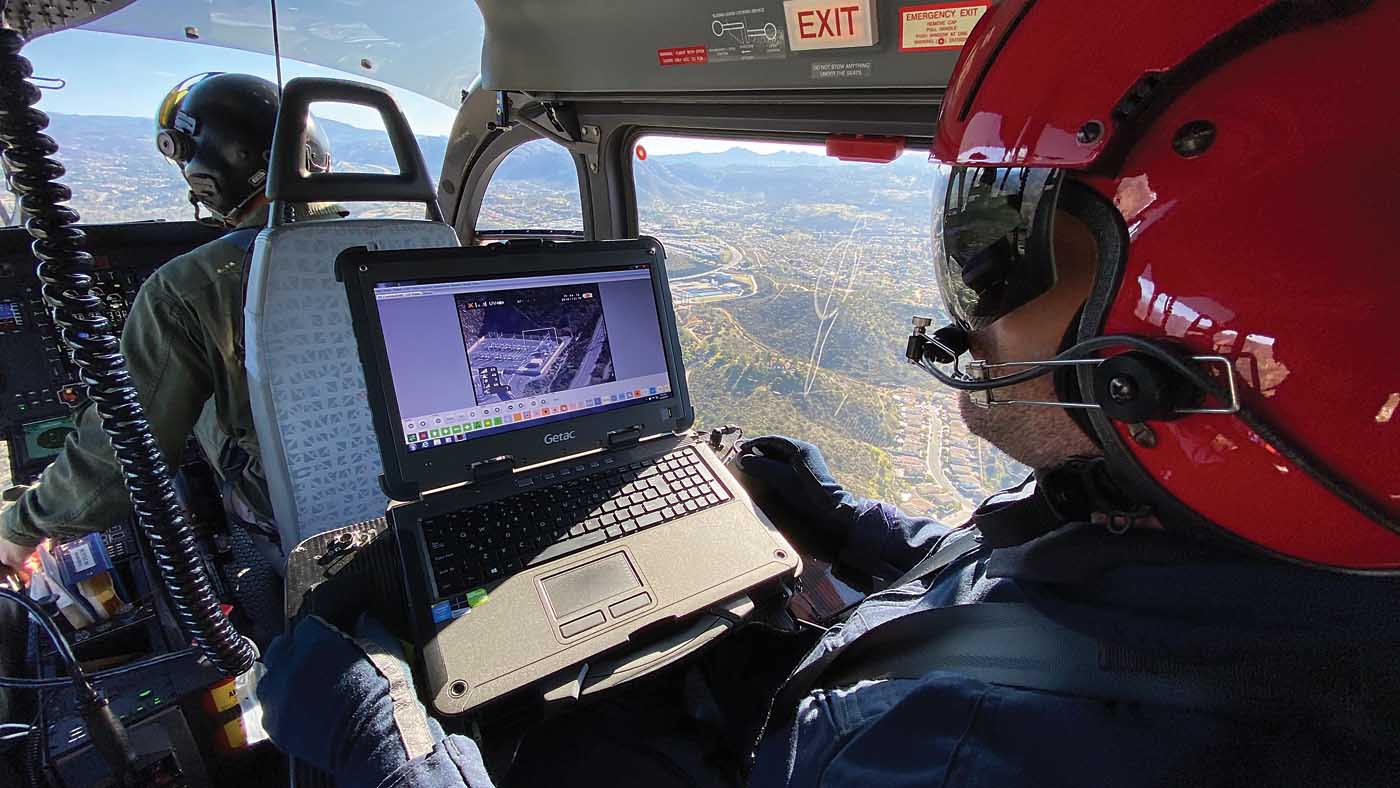
While the technology on SDG&E’s H145 may be of keen interest for fire managers, the aircraft can also be employed to perform a number of other missions. Current operations include human external cargo tower rescue missions, and firefighting utilizing a 180-US gallon (680-liter) Bambi Bucket. SDG&E also has an external rescue hoist for the H145, but this program is still in development.
“The H145 is our everyday workhorse,” said Thrush. “We use it for all of our patrols, whether visual, infrared, or corona inspections; vegetation management; pole sets; construction; external loads. . . . It’s doing all of our missions for us.”
Heavy Lifting
In the fall of 2018, SDG&E announced its Aircrane contract with Erickson would be modified to provide year-round coverage. SDG&E provides the aircraft for initial wildfire attack for up to two hours at company expense; beyond that, the responsible agency (whether Cal Fire, US Forest Service, or a city entity) is billed at a discounted hourly rate.
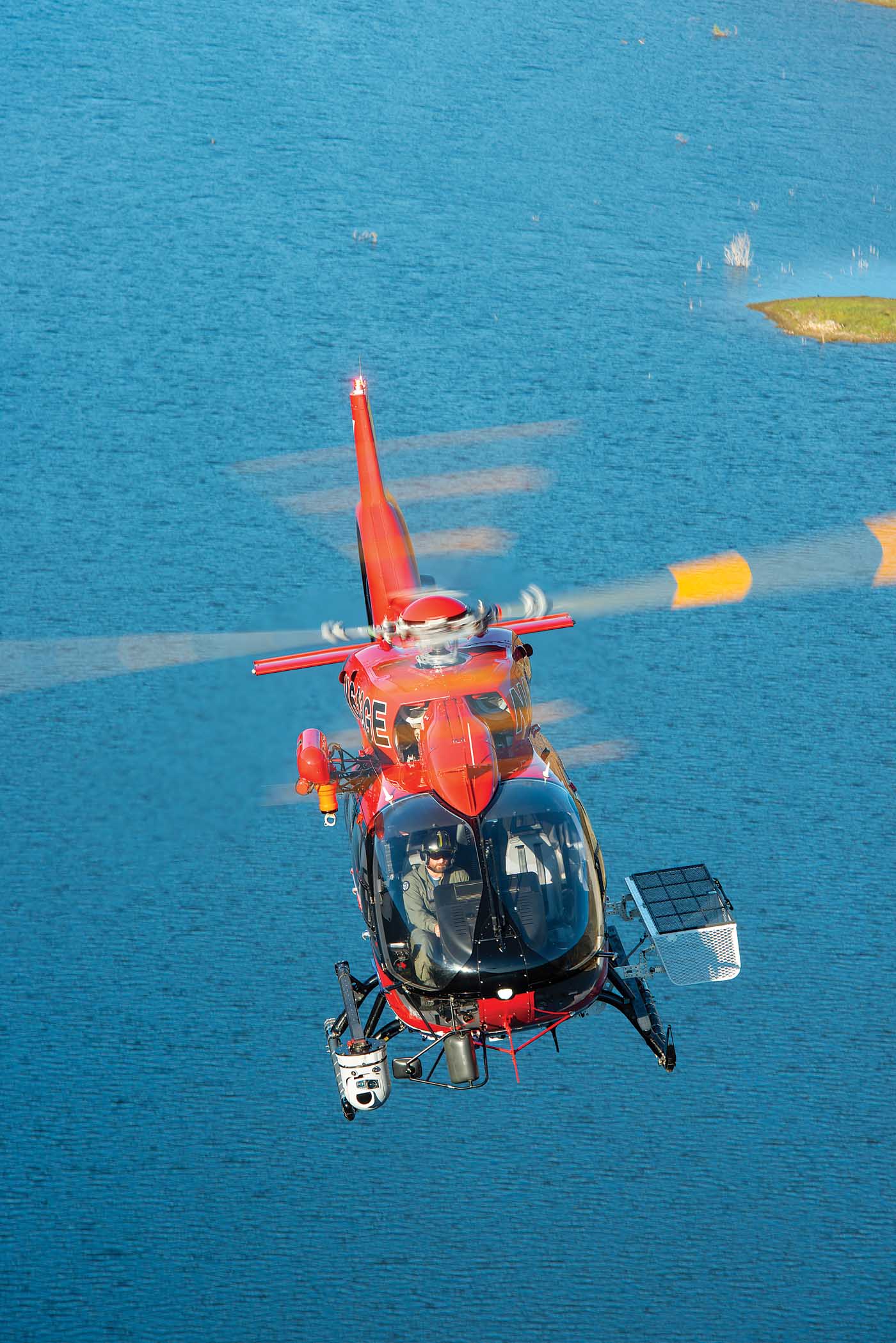
In the aftermath of several devastating wildfires in Northern California where utility operators were deemed to be at least partly responsible, the CPUC required utility providers develop comprehensive wildfire mitigation plans. SDG&E’s plan included the addition of a further Type 1 helicopter.
In June 2019, the company reached an agreement with San Diego County to provide a UH-60 Black Hawk. The aircraft, on lease from and operated by HeliStream, is another dedicated firefighting asset for San Diego County, under a similar arrangement as the Aircrane. Initially, the UH-60 utilized a Bambi Bucket for fire operations, but a Simplex 850-US gallon (3,220-liter) internal tank is now installed to dramatically enhance the aircraft’s firefighting capabilities.
When the need arises and in periods of low fire danger, the UH-60 and the Aircrane can be reconfigured for SDG&E construction projects.

“Having year-round access to two Type 1 helicopters that are readily available to the county for firefighting is huge,” said Nick Brown, battalion chief for air operations for Cal Fire San Diego. “They provide additional equipment that is very much needed on an initial attack as well as fires that are going extended.”
On any given day, in addition to the three SDG&E aircraft, aviation managers may also be coordinating anywhere from three to eight CWN aircraft working on various projects throughout the county. Typically, SDG&E make initial requests for assets through HeliStream. Depending on aircraft availability and special projects, other CWN operators may be sourced as well. Regardless, all aircraft and work crews assigned to SDG&E projects are monitored via TracPlus by SDG&E’s flight operations base.
Beyond its helicopter assets, SDG&E’s aviation department also manages 17 drones or unmanned aerial systems (UAS). The company began evaluating a variety of drone systems about six years ago, understanding how they could best be integrated into field utility work. Initially, 26 “use cases” were identified where drones could be used to improve efficiency, reduce costs, and reduce the physical impact of the company’s operations on the environment. In addition to its internal drone work, an extensive tower and pole inspection program is underway, with up to 60 contracted drone teams flying in the service territory daily.

“We have so many environmentally sensitive areas here in San Diego,” said Christine Asaro, SDG&E’s UAS operations advisor. “In the beginning, we were using [drones] for planning aspects in those areas that had a lot of sensitive vegetation. You take that aerial photo, and now in your planning, you can show the crews: you can park your trucks here, here’s your helicopter loading zone and if there’s no sensitive vegetation, here’s your foot path. . . . It just really gives them a good aerial perspective of what they’re going into. So now, we stay on the road or the right of way and we’re not tromping through those sensitive areas.”
The drones have greatly reduced costs and improved efficiency in the field. Instead of driving heavy wheeled vehicles into the field and workers climbing poles or using bucket trucks to access infrastructure, managers now can use drones to minimize environmental impact and better assess construction or repair needs.
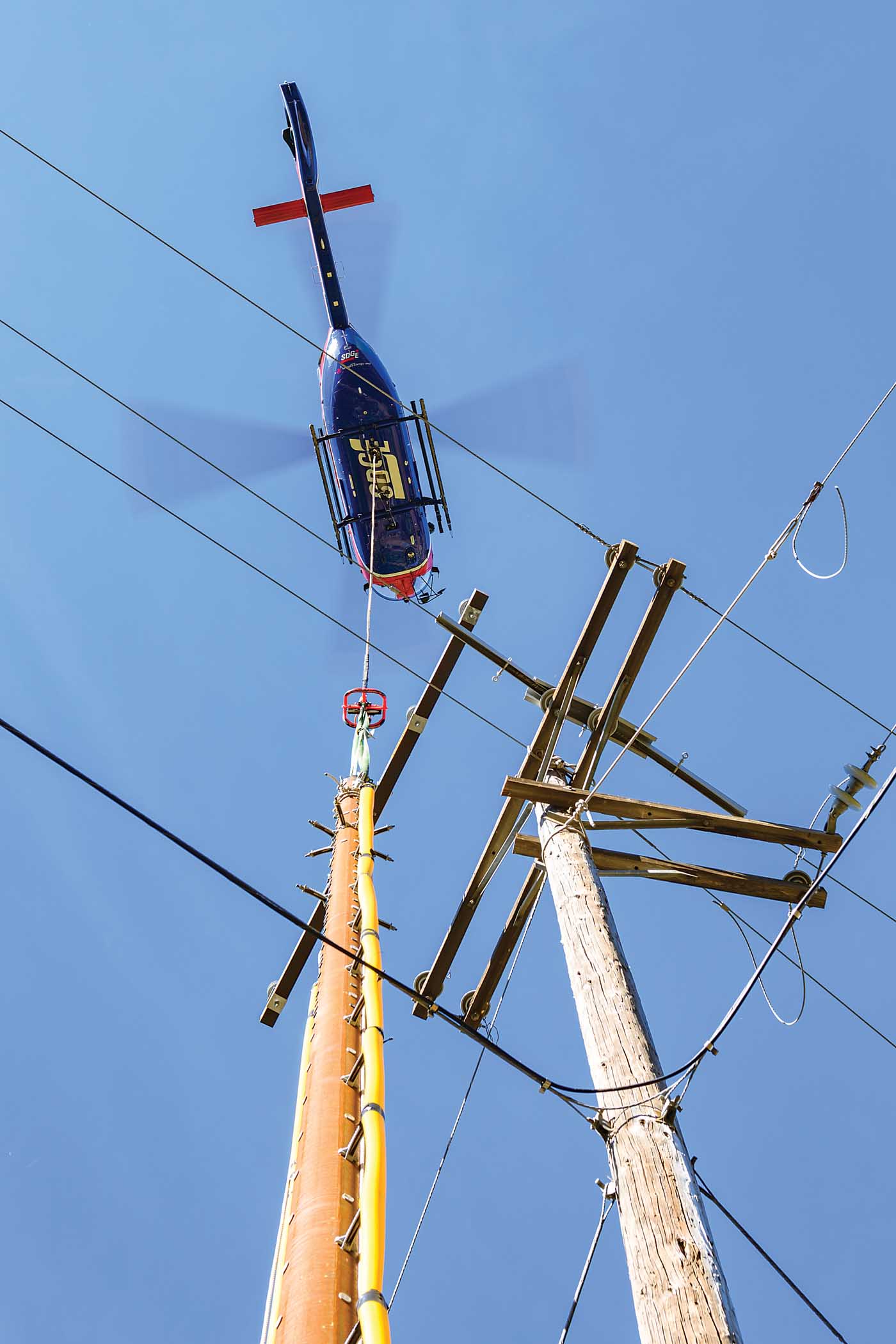
The drones are all consumer, professional and enterprise models from DJI, with one model even capable of flying a Corona and Infrared imaging system. Fourteen SDG&E employees have undergone extensive training to operate the drones in support of projects in the field. The company also outsources some specialized projects, such as LiDAR (light detection and ranging) missions, which are used to create precise, three-dimensional mapping products of terrain.
In a rather short period of time, SDG&E has ramped up a very robust and progressive aviation operation. Company executives looked beyond a narrow focus of supporting only their utility interests, recognizing instead how the capabilities of their aircraft and technology can provide an invaluable extra measure to greatly enhance public safety, further protecting the communities they serve.
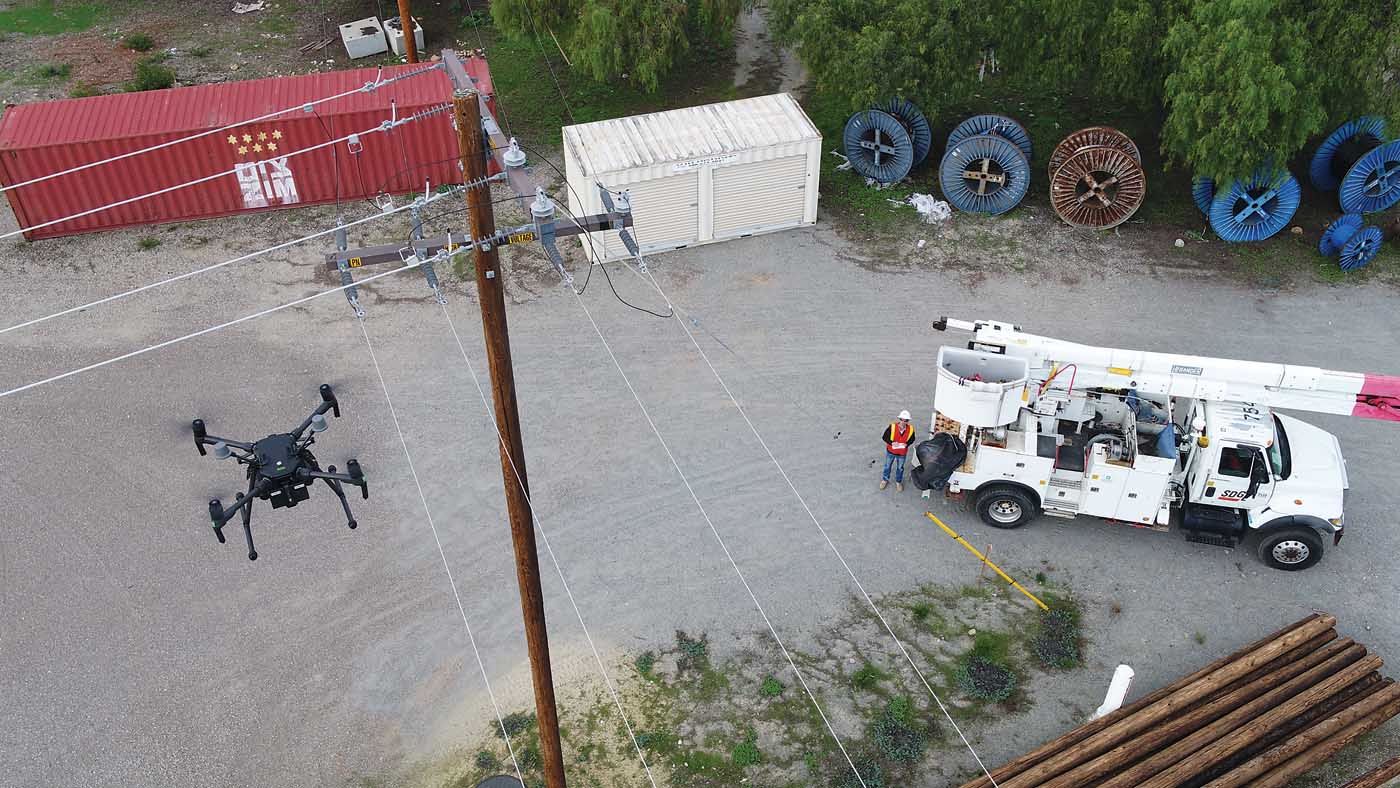
“We have very good support from all throughout the company, especially with our executives,” said Thrush. “They understand the level of safety and the level of efficiency we’ve achieved out here. Safety is our priority in every single job. You can see it in the aircraft we’re flying, and you can see it in the quality of work our folks are doing out there.”





